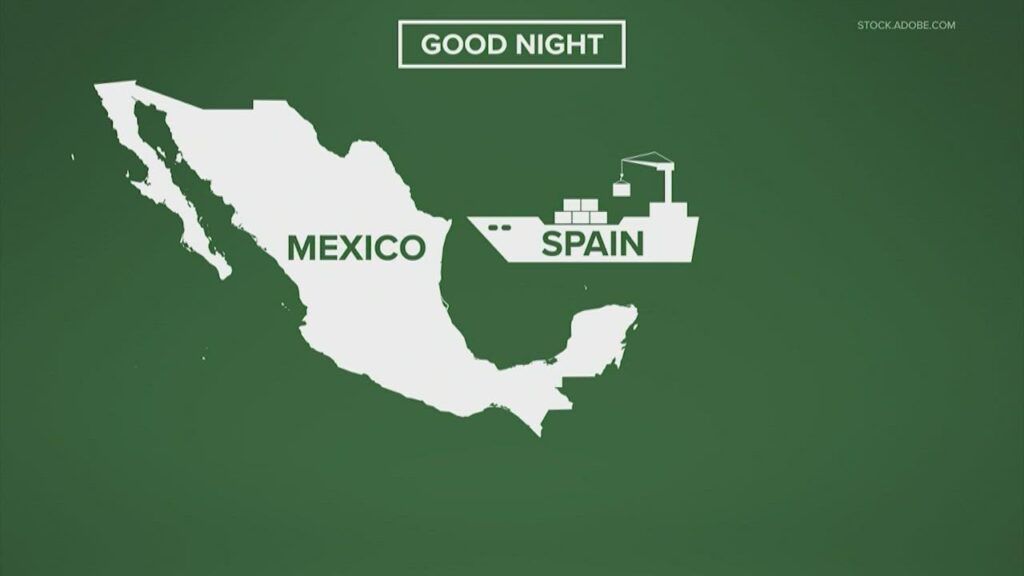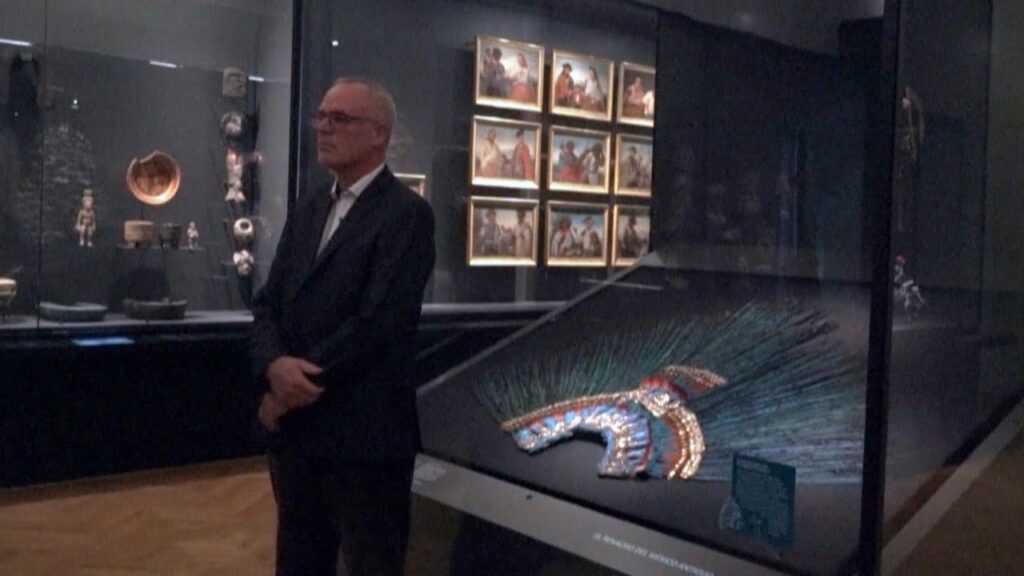The Mysterious Disappearance of Iztacalco’s Lake
Once a prominent feature in the Valley of Mexico, the now-vanished Lake of Iztacalco holds tales of intrigue and mystery. Historically serving as a vital source of sustenance and transport for the local population, the lake’s disappearance has become a topic of both historical significance and environmental concern. The stories of its existence and subsequent disappearance span centuries, with early accounts from the Aztec civilization describing a vast expanse of water teeming with life.
The lake was known not only for its size but also for its critical role in the Aztec Empire. Iztacalco’s waters were integral for agriculture, fishing, and as a conduit for canals that connected the island city of Tenochtitlan, the heart of the ancient Aztec world. However, with the arrival of the Spanish conquistadors, the landscape began to change. The construction of infrastructure and new urban planning initiatives led to the incremental draining of the lake and transformation of the area into a mix of dry land and marshes.
In the years that followed, particularly throughout the 17th and 18th centuries, efforts to prevent flooding by draining the water continued aggressively. Various hydraulic projects were implemented to manage the water levels, which inadvertently led to the acceleration of the lake’s depletion. By the end of the 19th century, what was once a vast aquatic marvel had been reduced to nearly nothing, leaving behind a legacy wrapped in folklore and a sense of loss among the indigenous people.
The disappearance of Lake Iztacalco is also significant in an ecological context. The region’s biodiversity was once rich, providing habitat for various species of aquatic life, birds, and supporting a complex ecosystem. The change not only affected the environment but also had a profound impact on the communities that depended on the lake for their livelihood. This transformation marked a turning point where traditional ways of life were lost to the surge of urbanization and industrial progress.
Today, the area where Iztacalco’s Lake once existed is heavily urbanized, with few reminders of its watery past. The story of its disappearance underlines important themes such as the dramatic impact of human activity on the environment and the profound changes that can occur over relatively short historical periods. Uncovering the layers of Iztacalco’s history continues to be a journey of discovery for both historians and environmentalists seeking to understand the full implications of the lake’s mysterious disappearance.
Exploring the History of the Iztacalco Housing Unit Lake
The Iztacalco Housing Unit Lake, a hidden gem located in the bustling urban expanse of Mexico City, carries with it a rich tapestry of history and culture. Once part of the ancient Lake Texcoco, the area surrounding the lake has been a witness to myriad transformations, from the pre-Hispanic era to the modern day. This area, now an integral part of the urban landscape, offers a unique window into the ecological and societal changes that have shaped this dynamic city.
Historically, the Iztacalco area was renowned for its chinampas, the floating gardens that were a marvel of agricultural engineering in the Aztec period. These innovative farming techniques provided sustenance to the local population and were integral to the Aztec economy. Today, while the chinampas have largely disappeared, the Iztacalco Housing Unit Lake serves as a poignant reminder of the ingenious practices of early Mesoamerican cultures.
In the colonial period, the lake underwent significant changes, with Spanish urban planners drastically altering the landscape to prevent flooding and to accommodate the growing population. Canals were filled, and the lake was drained, giving way to new urban developments. The Iztacalco Housing Unit Lake was one such development, a project that aimed to provide modern living spaces while also paying homage to the area’s extensive aquatic history.
Throughout the 20th century, the lake continued to evolve, reflecting the urbanization and industrialization of Mexico City. It was during this time that the Iztacalco Housing Unit came into existence, a testament to Mexico’s post-revolutionary urban planning initiatives. The lake now functions as a central point for the community, offering residents a breath of fresh air amidst the concrete jungle and serving as a habitat for local wildlife.
Current conservation efforts around the Iztacalco Housing Unit Lake aim to balance the need for urban space with environmental sustainability. Revitalization projects endeavor to clean and maintain the lake, creating recreational spaces for residents and visitors alike. This not only preserves the ecological integrity of the area but also ensures that the cultural and historical significance of the lake continues to be recognized and appreciated.
The Geographical Phenomenon Behind the Vanishing Lake in Iztacalco
Nestled within the bustling urban scape of Mexico City lies the borough of Iztacalco, which was once cradled by the waters of Lake Texcoco. The vanishing act of this lake is not merely a product of modern development but also a testament to the intricacies of Mexico’s geographical landscape. Over the centuries, the waters that once defined this land have receded, leaving behind a tale of transformation driven by both natural forces and human intervention.
The shrinkage of Lake Texcoco, of which Iztacalco was a part, results principally from the hydraulic engineering that dates back to the Aztec civilization. The Aztecs, who witnessed frequent floods, constructed a vast network of dikes and canals to control the water level. These ancient endeavors to tame the lake set the stage for a series of environmental modifications that would persist through the colonial period and continue well into the modern era, each further distancing Iztacalco from its aquatic origins.
In recent history, Lake Texcoco has undergone extensive drainage projects designed to accommodate Mexico City’s explosive growth. Urbanization demanded land, and the lakebed offered a precarious yet tantalizing site for development. The impacts of such large-scale drainage are multifaceted – while providing space for the city’s expansion, the disappearance of the lake also altered Iztacalco’s climate and ecology. The receding waters were a prelude to the urban sprawl that would later consume the lake’s identity as a natural body of water.
Environmental Management, or perhaps the lack thereof, also plays a critical role in this geographical phenomenon. The disappearance of Lake Texcoco spotlights the consequences of unsustainable urban planning. Chronic water shortages and land subsidence are but two of many repercussions faced by the city, revealing the struggle to strike a balance between human ambition and the limits of the natural world. As the lake gives way to concrete and steel, Iztacalco emerges as a living lesson in the complexities of managing land and water in a megacity.
Impact on the Community After the Iztacalco Lake Vanished
The disappearance of the Iztacalco Lake has had a profound effect on the local community, reshaping the social and economic landscape of the region. Where there was once a thriving ecosystem supporting a variety of local businesses, there is now a stark reminder of the environmental changes impacting the region. The lake, which was once a central part of the community’s identity, provided not only a source of livelihood for fishermen and other local entrepreneurs but also a place of recreation and social gathering for the residents.
Since the vanishing of the Iztacalco Lake, there has been a significant decline in local tourism. The picturesque views and water-related activities that drew visitors from near and far have diminished, leading to a downturn in tourist numbers and subsequently affecting businesses dependent on this influx of visitors. Many local artisans, who relied on selling their crafts and goods to tourists, have had to seek alternative means of income or leave the area altogether in search of better opportunities.
The ecological impact of the vanishing lake has also been profound, with the loss of a critical habitat for wildlife. Bird species that depended on the lake for nesting and feeding have disappeared, altering the local biodiversity and disrupting the balance of the ecosystem. This ecological shift has been felt by the community, with many residents mourning the loss of the natural beauty and diversity that once surrounded them.
In response to these challenges, community organizations have been working to adapt and overcome the adverse effects brought about by the lake’s disappearance. Initiatives focused on environmental education and the promotion of sustainable practices are emerging, aimed at both restoring some of what was lost and preventing future environmental degradation. Despite the hardships faced, there is a sense of resilience and a concerted effort to seek new opportunities in the wake of the Iztacalco Lake’s disappearance.
Uncovering the Secrets of Iztacalco’s Lost Lake
The borough of Iztacalco in Mexico City harbors a fascinating history that dates back to pre-Hispanic times, one that is closely tied to the waters that once flowed here. The mystery of Iztacalco’s lost lake, once part of the greater Lake Texcoco system, has intrigued historians and adventurers alike, beckoning them to discover its past splendors hidden within the urban landscape.
In its heyday, the lake was a lifeline for the residents dwelling around its banks, providing both sustenance through fishing and agriculture and a means of transportation with its intricate network of canals. It also held significant cultural importance to the ancient civilizations, including the Mexica (Aztecs), who engineered the aquatic landscape to fit their needs.
Modern Iztacalco stands as a testament to human ingenuity and the force of nature’s reclaiming hand. As visitors walk among the bustling streets and markets, it is hard to imagine that this was once a serene aquatic environment, home to numerous aquatic species and a sophisticated water management system that was far ahead of its time.
Traces of the lake’s existence still whisper to those who seek it out. Historical maps and the layout of the elder parts of the neighborhood provide subtle hints, while excavation projects occasionally unearth artefacts and ecofacts that once belonged to the lake’s ecosystem or to the humans who thrived alongside it.
The quest to uncover the secrets of Iztacalco’s lost lake is more than a historical pursuit—it is a narrative that connects the people of Mexico to their ancestral roots and the ingenuity of their forebears. It is a story that is continually being revealed, piece by piece, through ongoing research and the collective memory of the community.
What the Iztacalco Lake’s Disappearance Teaches Us About Urban Planning
The Historical Perspective
Before it became a dense urban area, the site of present-day Iztacalco was part of a much larger system of lakes that cradled the Valley of Mexico. Known for its abundant water supplies, the area was once home to a thriving habitat that supported both wildlife and the needs of pre-Hispanic civilizations. However, as the city of Mexico City expanded, the demand for land increased, leading to the progressive draining and filling of Iztacalco Lake for urban development. The disappearance of the lake stands as a stark reminder of the consequences of unplanned urban sprawl and the underestimation of ecological value in city planning.
The Environmental Impact
The drainage of Iztacalco Lake had immediate environmental implications. Loss of biodiversity, disruption of local climate patterns, and the vanishing of natural water filtration systems are among the most striking consequences. Importantly, the lake’s disappearance unveiled a critical oversight in urban development: the failure to account for the natural processes that sustain urban life. This oversight led to long-term challenges, such as increased pollution, flooding, and the urban heat island effect, where the absence of natural bodies of water leads to higher temperatures in the urban landscape.
Lessons for Future Urban Planning
Studying the Iztacalco Lake’s disappearance offers invaluable lessons for urban planners worldwide. It emphasizes the necessity of recognizing the limits of natural resources and the significance of incorporating green space and water conservation strategies into urban design. Cities must balance growth with sustainability, integrating infrastructure that respects and harmonizes with the environment. As megacities continue to expand, the experience of Iztacalco serves as a cautionary tale, encouraging a more mindful approach that can mitigate similar losses in the future.



